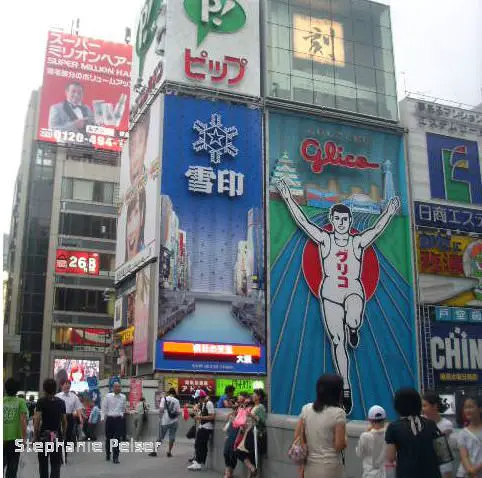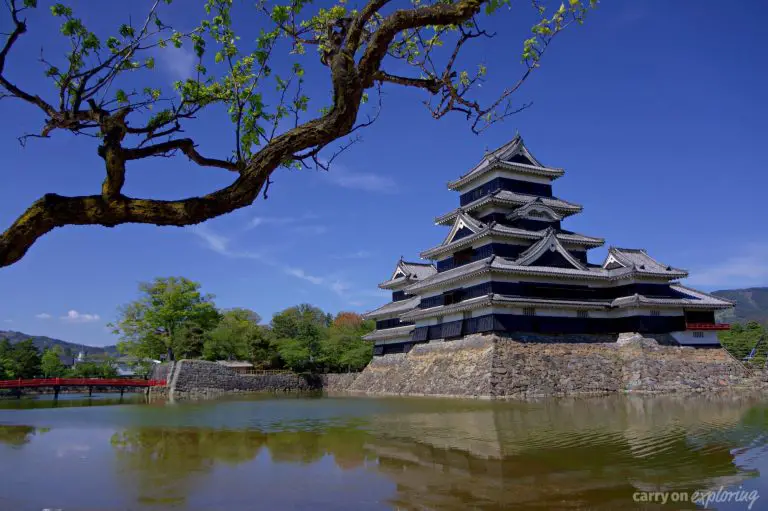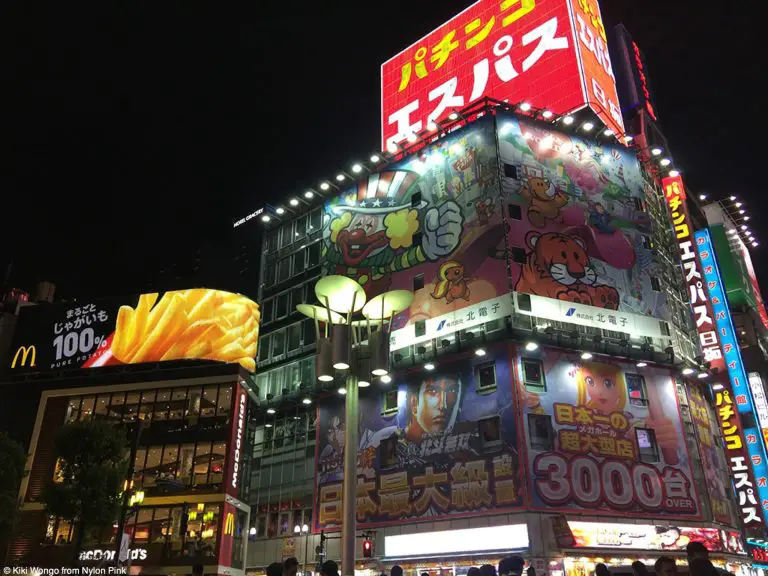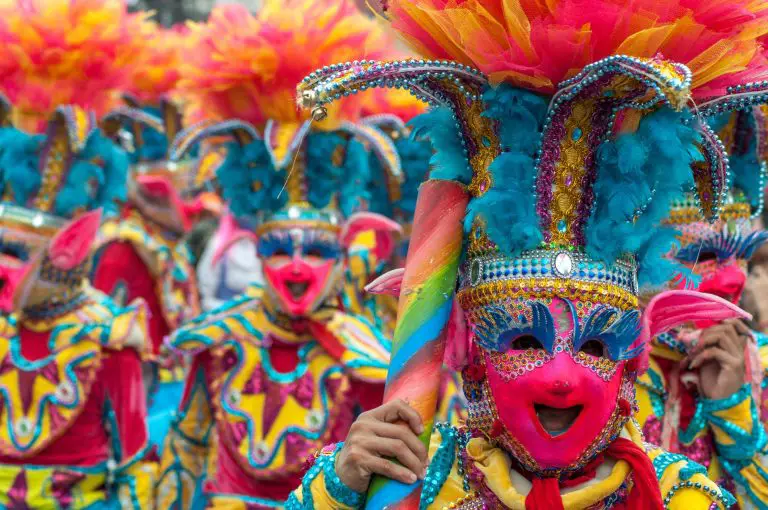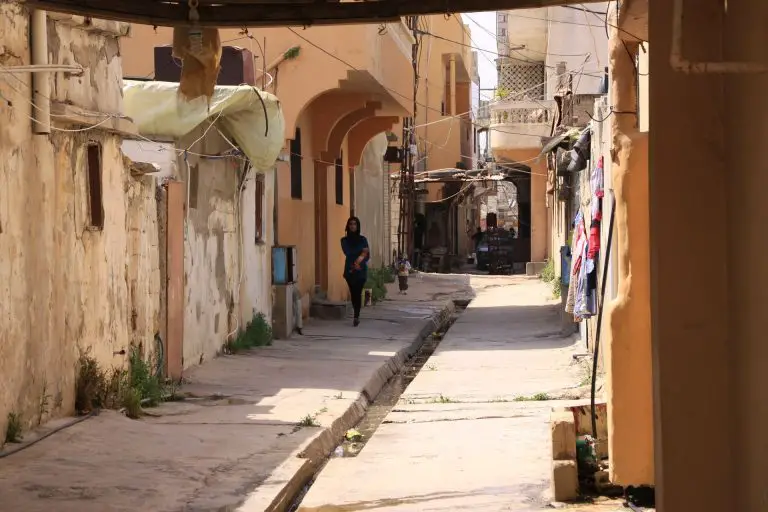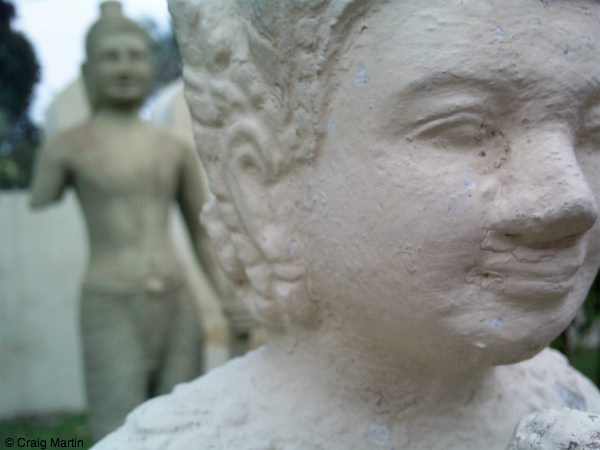A travel guide to Osaka, Japan
Osaka lies about 60 miles south of Kyoto, in the heart of the Kansai region — also the birthplace of most ancient Japanese culture. In some ways, it’s the Kuala Lumpur of Japan – most people just pass through on their journey, if they stop there at all. If you do that, you are missing out on a lot!
Table of Contents
Discovering Osaka
Osaka is considered to be the second city of Japan, although by population it is only the third biggest (after Tokyo and Yokohama). It’s seen by many as the edgier, cheaper and somewhat smaller anti-capital: the Chicago, the Manchester, the Bordeaux of Japan.
Osaka (then known as Naniwa) was the capital of ancient Japan, long before anybody had even heard of Kyoto. Later, as political power shifted to Nara, Kyoto and finally Tokyo (among others), Osaka occupied itself with the more enjoyable things: countless forms of art and entertainment were born here.
Because of its harbour and closeness to the continent (Osaka literally means ‘big harbour’), Osaka was one of the first cities in Japan to become industrialised. To this day, it’s also nicknamed ‘commerce city’ by the Japanese, and still has one of Asia’s three biggest freight harbours.
Of more interest to the traveller, Osaka is famous for three things:
- Its friendly, straightforward (by Japanese standards) locals that speak a particularly colourful dialect known as Osaka-ben;
- Its good, cheap, and plentiful food;
- Its nightlife and entertainment.
The Osaka Dialect – Forget ‘konnichi wa’: it’s ‘maido’ here
In Tokyo, people can be somewhat aloof and ignore travellers as they are always in a hurry, travelling in those horribly crowded trains. In contrast, Osakans are a curious folk, not afraid to strike up a conversation with a stranger; and, thanks to many universities in the area, a surprising number of them also speak English quite well.
Food and drink in Osaka: Eat till you drop!
Eating out is a pleasure, and it’s much cheaper here than in other Japanese cities. There is a Japanese saying that in Kyoto, people shop till they drop, but in Osaka, they eat till they drop!
And it’s true. Forget everything you’ve heard about the healthy Japanese diet: the local signature dishes are takoyaki, fried octopus balls (not what you think it is!) that are sold by many street vendors, and okonomiyaki which is often described as a Japanese pizza, but which is more like a very freestyle omelet — though it probably has as many calories as your average pizza!
Check out these top-rated Osaka Food Tours!
Of course, all the traditional, elegant, and healthy Japanese cuisine you can think of is available here, plus countless pastry shops, cafés, and international restaurants — including a little Korea Town if you need some spicier food for a change!
Unlocking Osaka’s Entertainment: the Venice of Japan
I know, how many names does one city need? Osaka was known as ‘the water city’ during its heyday as Japan’s entertainment city, due to the many canals and the two rivers that cross the city. But there are more bars hidden away in those skyscrapers than you can imagine!
There’s nothing in Tokyo that you couldn’t find in Osaka – department stores, covered shopping arcades, pachinko parlours, tiny bars, big clubs, Maid Cafés and everything else a visiting anime or manga fan could dream of.
Osaka has two main downtown areas
1. Around the JR central station (Umeda), where all the trendy department stores, fine dining places and many expat spots are located.
2. The somewhat wilder, rowdier southern area around Namba station. Here you can walk along the main drag (Dotonbori) any night of the week from 7pm and have the impression that it’s 11pm on a Saturday night.
Osaka might not look like much during the day, but it definitely comes out at night!
Visit the new world of Shin-Sekai
For something very different, check out Shin-Sekai (‘New World’), about a mile or two subway stops south of Namba, where they tried to set up a futuristic town centre in around 1910. The area was forgotten during the following decades of war.
Building work was resumed in the 60s, so that now, the area boasts a futuristic retro-charm that has to be seen to be believed.
Home to Tsutenkaku Tower
At the heart of Shin-Sekai, you’ll find the famous Tsutenkaku Tower, an iconic symbol of Osaka. Standing tall since 1956, the tower is a peculiar mix of Paris’ Eiffel Tower and the Arc de Triomphe, offering panoramic city views from its observation deck.
The street food and Shin-Sekai’s bargain-friendly markets are a perfect playground for shopaholics. The Shinsekai Market, a bustling stretch teeming with souvenir shops, has been a treasure trove for quirky mementos, traditional handicrafts, and distinctive knick-knacks.
Discover more Japan Travel Ideas
- Japan travel hub
- Japan tours and trips
- How to plan a trip to Japan
- Bullet trains and cherry blossoms: the Japan podcast
- How to celebrate the Cherry Blossom Festival in Japan
Tokyo
Osaka
Questions about travel to Osaka
Here are some of the questions often asked about travel to Osaka. Added and updated by Indie Travel Podcast staff.
Is it safe to visit Osaka?
In the early 2010s, due to the devastating earthquake/tsunami in the northeast of the main island Honshu and the ‘what if’ looming over the nuclear power plant in Fukushima, Japan saw visitor numbers plummet. It shouldn’t have, because there are many awesome areas in the country that are perfectly safe to visit, such as Osaka.
Is it possible to travel to Osaka by Japan Rail Pass?
It is not just possible but also incredibly convenient and efficient to travel to Osaka using the Japan Rail Pass, often referred to as ‘JR Pass’. This is particularly true if you’re planning on venturing outside of the city to explore other parts of the country.
As a traveller, the Japan Rail Pass is your golden ticket, your passport to the intricate, reliable and far-reaching train network that binds this enchanting island nation together. The JR Pass serves as a multi-use discounted ticket, giving its holders unlimited travel on Japan’s extensive rail network which is operated by the six companies of the Japan Railways Group, commonly known as JR Group. This includes a multitude of lines in Osaka, making it an indispensable part of your trip. Changes in 2023 are making it more expensive, but still a great enabler for travellers.
Is Osaka cheaper to visit than Tokyo?
As seasoned travellers, we often find ourselves comparing the costs of different cities. In my personal experience, having lived, worked, and travelled extensively in both Tokyo and Osaka, I can confidently say Osaka, while holding its own charm and character, is generally much more budget-friendly than its larger sibling, Tokyo.
What are some insider tips for exploring Osaka?
Osaka, often referred to as the nation’s kitchen, has much to offer besides the conventional tourist trail. These food tours do a great job of helping you discover that most-salient point though!
If you dare to step off the beaten path and listen to that instinctive call for an adventure, unique, inspiring experiences await. Here are some insider tips which could enhance your exploration of this spectacular city:
- Navigate Like a Local: The Osaka Metro is not only one of the most efficient means of transport but also an integral part of the local life. Don’t miss the rush-hour ride—you will be amazed at how comfortably we squeeze in!
- Cycle: The city layout is pretty straightforward and roads are well-maintained. Bicycles are a popular form of travel, and bike rentals are readily available. It is a great way to explore the city and surrounding areas like Suita and Ibaraki.
- Deciphering the Authentic Cuisine: Venture into the local Izakayas (casual Japanese pubs). Here you can relish the authentic Osakan flavours and share a table with locals—an excellent way to feel the warmth and vibrancy of their culture. My favourite is the Izakaya Toyo where the charismatic Chef Toyo-san happily grills over repurposed beer kegs.
- Dive into the Local Scenes: Don’t limit yourself to conventional sightseeing. Hang out at places where locals go after work or on weekends. A walk around the neighbourhood parks, shopping at local grocery stores, or even joining one of the countless local festivals can give you vivid insights into everyday life in Osaka.
- Morning charm of Osaka Castle: As an insider tip, consider visiting Osaka Castle early in the morning. The tranquillity and that morning light hitting the castle, contrasting against the moat and cherry blossom trees, is a sight to behold.
What are some nerdy things to do in Osaka?
As an enthusiast of all things geeky, you can’t miss out on what Osaka has to offer.
The Nipponbashi Denden Town
The first stop on our nerdy adventure is the Nipponbashi Denden Town, a place that’s akin to a pilgrimage for anime, games and electronics lovers.
- The Super Kids Land: Five floors of sprawling toy heaven that will make both kids and adults go wide-eyed, where you can find everything from traditional Japanese toys to the latest in electronic gaming.
- Anime stores: From rare manga collections to beloved anime merchandise, your favourite characters come to life in the many anime stores scattered throughout this district.
Hirakata Park
Further indulge your inner child and fantasy lover with a visit to Hirakata Park, where you can enjoy thrilling rides, live shows featuring beloved Anime characters, and even dress up as historical personalities, samurais or princesses, and roam around the park. The combination of fun and nostalgia will surely make your day.
Visit the Cafe & Bar Characro
The day would not be complete without a visit to the Cafe & Bar Characro based on different animes. Not only can you dine like your favourite anime characters, but you can also find exclusive anime merchandise and witness some of the best cosplay performances in town.
In essence, whether you are an anime geek, gaming fanatic or a gadget lover, Osaka has a ‘nerdy’ treasure for you around every corner that guarantees to teleport you to your own thrilling, geeky adventure.
Hi Traveller!
Get Travel Insurance!
We use and recommend WorldNomads. Learn about Travel Insurance.
Find Great Tours
We start looking for food tours, historic tours, and mini-adventures right here.
Book flights – and save!
We’re using WayAway for cheap flights with cashback! Save 10% off WayAway Plus with coupon TP-450933
We use Travel Payouts, Amazon Affiliates and other programs, and may receive a commission if you purchase through links on this site.

